
In heraldry, the Allocamelus (a.k.a. Ass-Camel) was the depiction of a mythical creature with the head of a donkey and the body of a camel. [1] It was first used as a crest for the English Eastland Company, and later by the Russia Company. [2]

In heraldry, the Allocamelus (a.k.a. Ass-Camel) was the depiction of a mythical creature with the head of a donkey and the body of a camel. [1] It was first used as a crest for the English Eastland Company, and later by the Russia Company. [2]

Heraldry is a discipline relating to the design, display and study of armorial bearings, as well as related disciplines, such as vexillology, together with the study of ceremony, rank and pedigree. Armory, the best-known branch of heraldry, concerns the design and transmission of the heraldic achievement. The achievement, or armorial bearings usually includes a coat of arms on a shield, helmet and crest, together with any accompanying devices, such as supporters, badges, heraldic banners and mottoes.
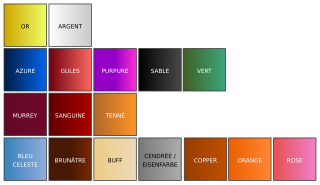
Tincture is the limited palette of colours and patterns used in heraldry. The need to define, depict, and correctly blazon the various tinctures is one of the most important aspects of heraldic art and design.

The lines in heraldry used to divide and vary fields and charges are by default straight, but may have many different shapes. Care must be taken to distinguish these types of lines from the use of lines as charges, and to distinguish these shapes from actual charges, such as "a mount [or triple mount] in base," or, particularly in German heraldry, different kinds of embattled from castle walls.
In heraldry, variations of the field are any of a number of ways that a field may be covered with a pattern, rather than a flat tincture or a simple division of the field.

An abatement is a modification of a coat of arms, representing a less-than honorable augmentation, imposed by an heraldic authority or by royal decree for misconduct. The practice of inverting the entire escutcheon of an armiger found guilty of high treason has been attested since the Middle Ages and is generally accepted as reliable, and medieval heraldic sources cite at least one instance of removing an honourable charge from a coat of arms by royal decree as an abatement of honour. Other abatements of honour implied by the addition of dishonourable stains and charges, appearing in late 16th-century texts, have never been reliably attested in actual practice. Additionally, as many heraldic writers note, the use of arms is not compulsory, so armigers are more likely to relinquish a dishonored coat of arms than to advertise their dishonor.
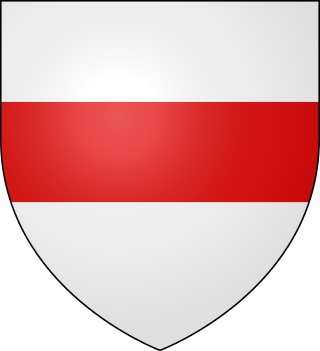
In heraldry, a fess or fesse is a charge on a coat of arms that takes the form of a band running horizontally across the centre of the shield. Writers disagree in how much of the shield's surface is to be covered by a fess or other ordinary, ranging from one-fifth to one-third. The Oxford Guide to Heraldry states that earlier writers including Leigh, Holme, and Guillim favour one-third, while later writers such as Edmondson favour one-fifth "on the grounds that a bend, pale, or chevron occupying one-third of the field makes the coat look clumsy and disagreeable." A fess is likely to be shown narrower if it is uncharged, that is, if it does not have other charges placed on it, and/or if it is to be shown with charges above and below it; and shown wider if charged. The fess or bar, termed fasce in French heraldry, should not be confused with fasces.
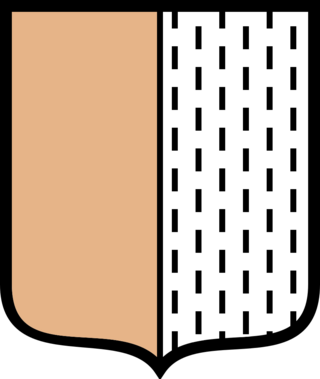
In heraldry, carnation is a tincture, the name for skin colour, more exactly the colour of pale or European human skin.

The Royal Heraldry Society of Canada is a Canadian organization that promotes interest in heraldry in Canada. It was founded in 1966 and granted royal patronage in 2002.

In heraldry and vexillology, a pale is a charge consisting of a band running vertically down the centre of a shield or flag. Writers broadly agree that the width of the pale ranges from about one-fifth to about one-third of the width of the shield, but this width is not fixed. A narrow pale is more likely if it is uncharged, that is, if it does not have other objects placed on it. If charged, the pale is typically wider to allow room for the objects depicted there.

A cross fleury is a cross adorned at the ends with flowers in heraldry. It generally contains the fleur-de-lis, trefoils, etc. Synonyms or minor variants include fleuretty, fleuronny, floriated and flourished.

Ermine in heraldry is a fur, a type of tincture, consisting of a white background with a pattern of black shapes representing the winter coat of the stoat. The linings of medieval coronation cloaks and some other garments, usually reserved for use by high-ranking peers and royalty, were made by sewing many ermine furs together to produce a luxurious white fur with patterns of hanging black-tipped tails. Due largely to the association of the ermine fur with the linings of coronation cloaks, crowns and peerage caps, the heraldic tincture of ermine was usually reserved to similar applications in heraldry. In heraldry it has become especially associated with the Duchy of Brittany and Breton heraldry.
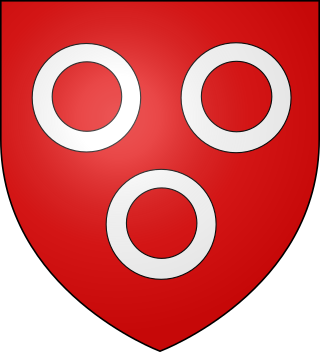
In heraldry, an annulet is a common charge, which can be described as a roundel that has been "voided".
In heraldry, an avellane cross is a form of cross which resembles four hazel filberts in their husks or cases, joined together at the great end. The term comes from the Latin name for the hazel, originally Nux avellana. It was fairly rare in English heraldry.
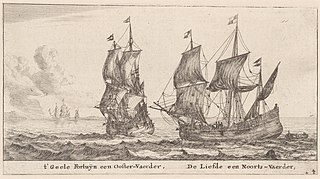
The Eastland Company, or North Sea Company, was an English Crown-chartered company, founded in 1579 to foster trade with Scandinavia and Baltic Sea states. Like the better-known Russia Company, this was an attempt by the English to challenge the Hanseatic League's dominance in the commerce of Northern and Central Europe.

The cross moline is a Christian cross, constituting a kind of heraldic cross.
In heraldry and heraldic vexillology, a blazon is a formal description of a coat of arms, flag or similar emblem, from which the reader can reconstruct the appropriate image. The verb to blazon means to create such a description. The visual depiction of a coat of arms or flag has traditionally had considerable latitude in design, but a verbal blazon specifies the essentially distinctive elements. A coat of arms or flag is therefore primarily defined not by a picture but rather by the wording of its blazon. Blazon is also the specialized language in which a blazon is written, and, as a verb, the act of writing such a description. Blazonry is the art, craft or practice of creating a blazon. The language employed in blazonry has its own vocabulary, grammar and syntax, which becomes essential for comprehension when blazoning a complex coat of arms.

A pall in heraldry and vexillology is a Y-shaped charge, normally having its arms in the three corners of the shield. An example of a pall placed horizontally (fesswise) is the green portion of the South African national flag.

In heraldry, crows, rooks, and ravens are not distinguished from each other. As with all birds that are not eagles, a crow or raven is depicted by default as close, but they can uniquely be blazoned as speaking. Crows may also be called corbies, as in the canting arms of Corbet.

A heraldic knot is a knot, unknot, or design incorporating a knot used in European heraldry. While a given knot can be used on more than one family's achievement of arms, the family on whose coat the knot originated usually gives its name to the said knot. These knots can be used to charge shields and crests, but can also be used in badges or as standalone symbols of the families for whom they are named. The simplest of these patterns, the Bowen knot, is often referred to as the heraldic knot in symbolism and art outside of heraldry.

A number of cross symbols were developed for the purpose of the emerging system of heraldry, which appeared in Western Europe in about 1200. This tradition is partly in the use of the Christian cross an emblem from the 11th century, and increasingly during the age of the Crusades. Many cross variants were developed in the classical tradition of heraldry during the late medieval and early modern periods. Heraldic crosses are inherited in modern iconographic traditions and are used in numerous national flags.